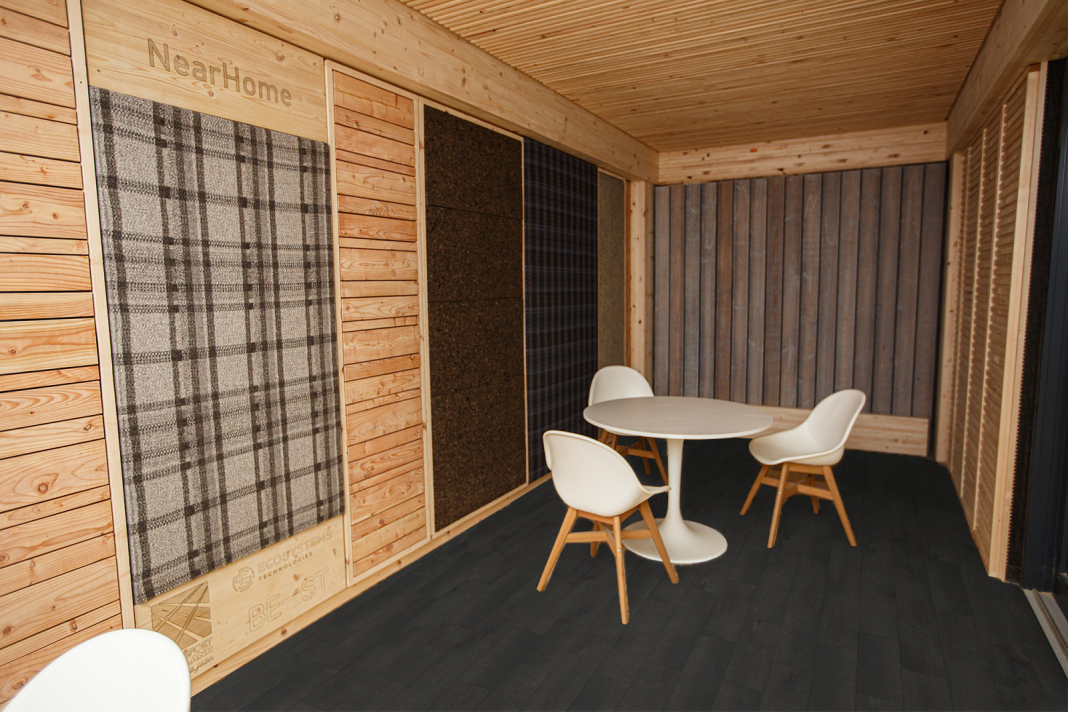A new modular timber demonstrator unit prototype shows how timber kit-of-parts approach to retrofitting could be the key to future sustainable offices
Built Environment – Smarter Transformation (BE-ST) has unveiled a new modular timber demonstrator unit to show Scottish businesses that a timber kit-of-parts approach to retrofit could be the key to future sustainable offices.
The technology can be adapted to different sizes and types of buildings
Following the development of a blueprint design last year, Ecosystems Technologies has now created a fully functioning prototype to encourage adoption of the modular approach among the Scottish business community.
Alongside the physical unit, an opensource free guide has been created by ThreeSixty Architecture to enable organisations to replicate the design and adapt it to different types and sizes of buildings.
The first office spaces already commissioned using the design are expected to be occupied later this year.
Scottish businesses are now being invited to view the demonstrator unit for themselves to experience how the timber-focused design could support future sustainable workplace strategies.
Built-in flexibility and the use of components manufactured offsite means that the design can be applied to a range of different scenarios, from standalone pods to new build units or to repurpose vacant buildings – and not only used for offices.
Matt Stevenson, founder of Ecosystems Technologies, said: “There are a range of ways that homegrown timber could be used more widely in construction and this retrofit design is a great example that can be easily adopted by businesses and other organisations as the built environment transitions to zero carbon.
“Scottish timber is a fantastic regenerative, low-carbon resource and there are significant opportunities to expand the use cases in the built environment through collaboration, research and digital technology. The NearHome project demonstrates the added advantage of a circular approach with the kit designed for reuse, meaning captured carbon can remain in the cycle for as long a period as possible.”
The modular timber demonstrator unit is part of a wider response to changing working patterns in a post-pandemic Scotland
The work forms part of the NearHome project, supported by Transport Scotland, which aims to provide businesses with the tools to transform and retrofit unused spaces into sustainable, energy-efficient out-of-town alternatives to city centre offices.
Lynsey Bryson, head of digital programmes at BE-ST, said: “NearHome has the potential to change how we think about the retrofit of non-domestic buildings going forward. We know that a one-size-fits-all approach is not going to be possible to suit the various building typologies we use in Scotland, but the modular design offers a flexible, sustainable solution that can be adapted on a case-by-case basis. “
Initial indications from the life cycle analysis of the NearHome approach suggest that the construction of a typical office building would produce five times more carbon dioxide equivalent compared to the modular, timber kit design.
The NearHome approach produces 535kg CO2e per m2 floor area during construction, compared to 2953 kg CO2e per m2 floor area for a typical traditional office building.
Patrick Harvie MSP, minister for zero carbon buildings, active travel & tenants’ rights, said:
“We funded the NearHome project to support workplace innovation and aid COVID recovery. It’s also helping to create new opportunities in Scotland’s construction industry, making better use of Scottish wood.
“Not every home is suitable for home working. Working from quality spaces closer to home can offer greater flexibility and work-life balance, whilst reducing car dependency and transport emissions, and creating local economic opportunities – which is all part of the Scottish Government’s ambition to support the development of 20-minute neighbourhoods.”

















